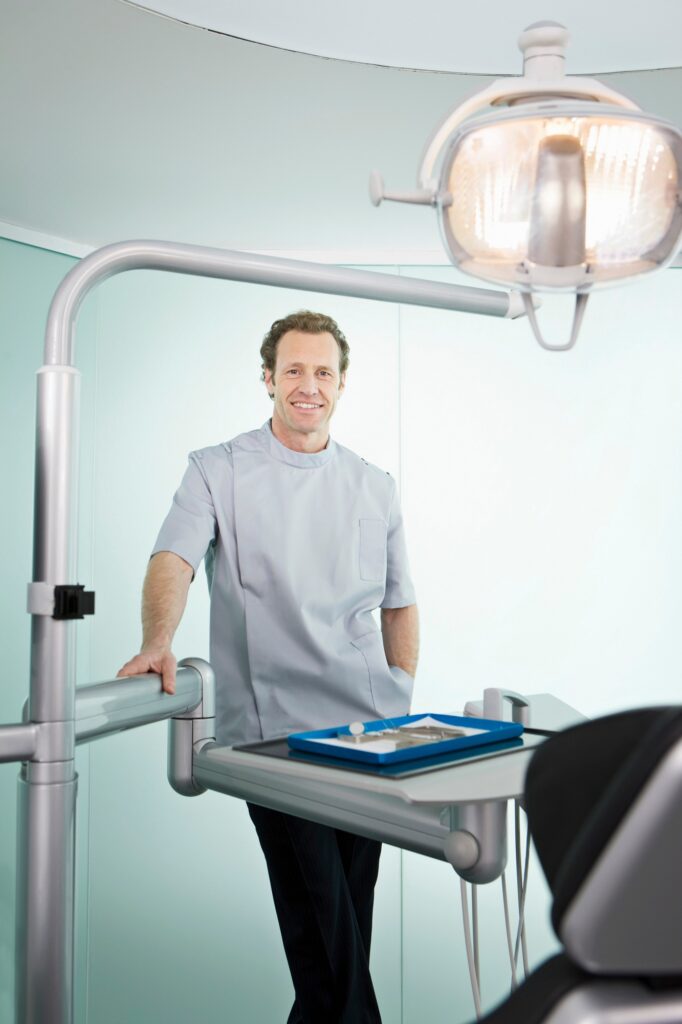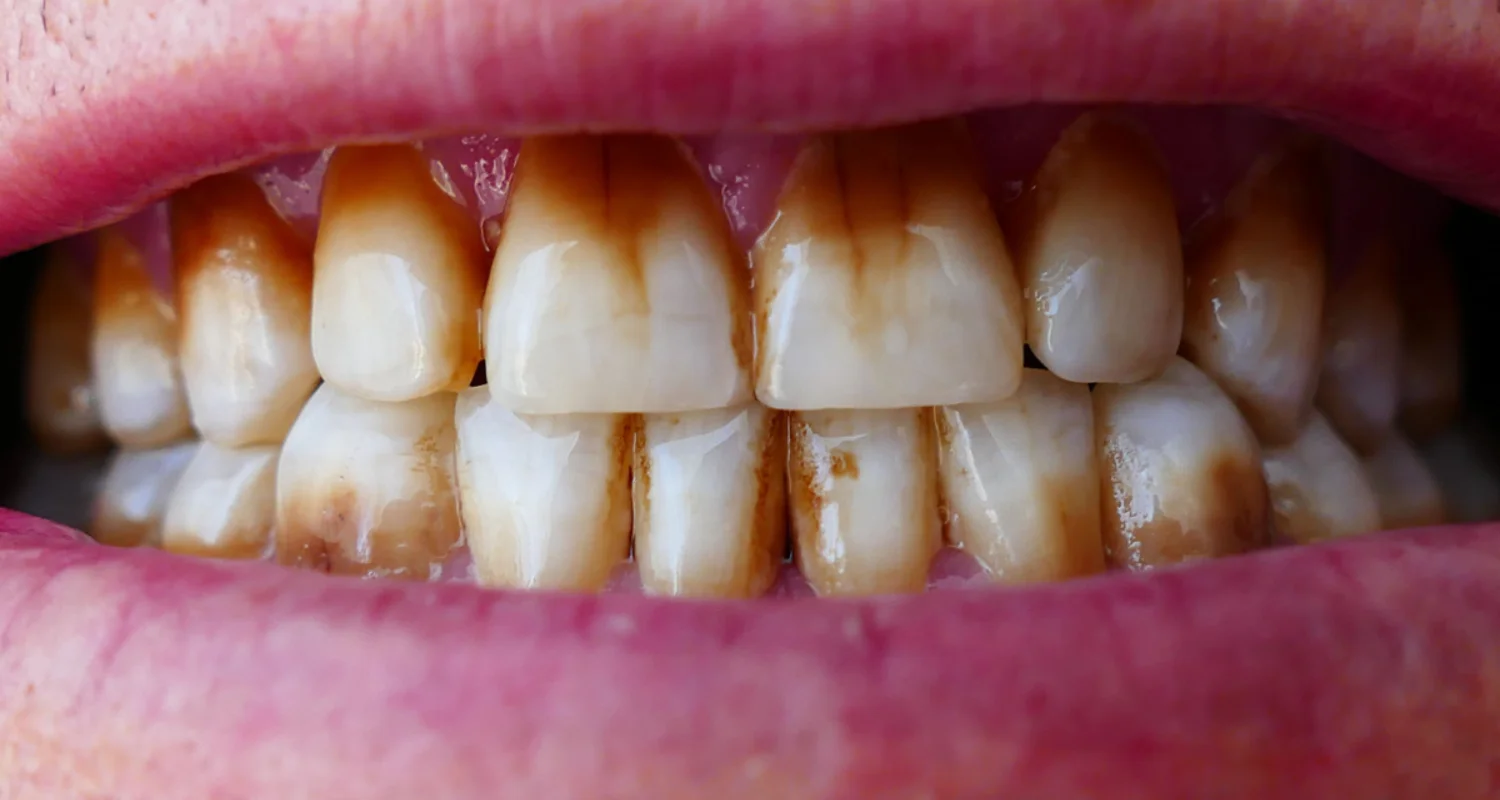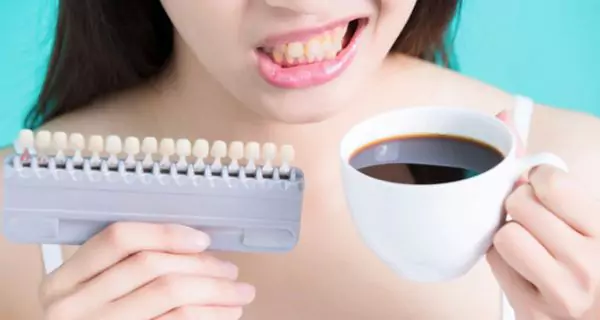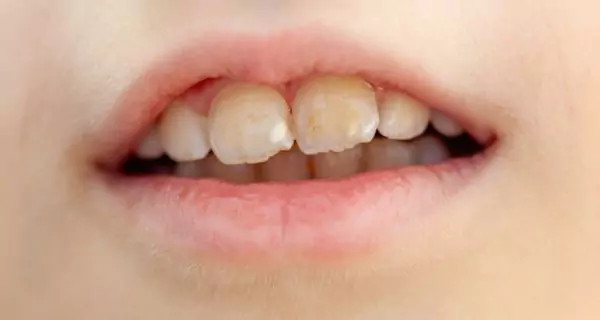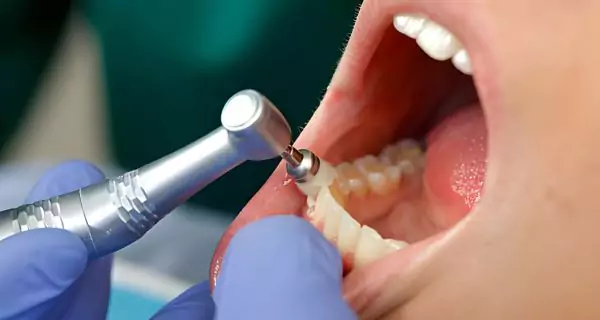Last Updated on: 15th December 2025, 10:33 am
To prevent coffee stains on teeth, rinse your mouth with water after drinking your favorite blend Brush your teeth 30 minutes later, use a straw, limit sugar, and maintain good oral hygiene. Use whitening toothpaste and visit your dentist for routine cleanings.
Coffee is one of the most popular drinks in the world, and for good reason. It gives us energy, helps us focus, and is simply part of many people’s daily routines. In the U.S. alone, about 75% of adults drink coffee, and nearly half do so every day.
But as common as it is to enjoy a cup of coffee, many people worry about a side effect like coffee stains on teeth.
Let’s talk about why coffee stains your teeth, how to clean those stains, and most importantly, what you can do to prevent them while still enjoying a good cup of coffee.
Why does coffee stain your teeth?
Coffee causes tooth discoloration. This happens for several reasons related to coffee’s content and how healthy your teeth are.
What in coffee causes stains?
The main reasons for coffee stains on teeth:
- Tannis: are natural compounds found in coffee. They stick on your teeth, causing yellow or brown stains over time.
- Dark color: Black coffee harbors strong pigments that can make your teeth darker, especially if you drink it every day.
- Acidity: Coffee is slightly acidic. Acid wears down the enamel and makes it easier for stains to stick. The more you drink coffee, the more enamel becomes.
- Temperature: Hot coffee opens tiny pores in teeth, the pigments and tannins go deeper into the enamel.
Even without added sugar or cream, coffee acts like a natural dye, much like tea, red wine, or berries.
How does enamel condition affect coffee stains?
Healthy enamel protects teeth from staining. But if it’s damaged, coffee can stain your teeth more easily.
Here’s how weak enamel makes stains worse:
- Eroded or thin enamel: allows pigments and acids to go deeper into the tooth.
- Dull or rough enamel: makes teeth look more yellow, less shiny, and catch more stains.
- Plaque and poor hygiene: If you don’t brush and floss well, coffee stays longer on your teeth and causes stains.
- Deep stains: In some cases, pigments can pass through the enamel and reach the inner layer (dentin), making the stain harder to remove.
What else can make stains worse?
Some daily habits can make coffee stains appear faster:
- smoking
- drinking tea, red wine, or dark sodas
- eating sugary foods
- not brushing regularly
- using a hard toothbrush that damages enamel
When should you see a dentist for coffee stains?
You should visit your dentist if you notice stains that don’t go away with regular brushing. These are some warning signs:
- brown or yellow stains that remain after brushing
- A dull smile or uneven tooth color
- Dark lines between teeth
- Teeth looking darker over time
Your dentist will check if the stains are only on the surface or if they have reached deeper layers of your teeth. Then, they will proceed to recommend the best treatment and give you tips to prevent new stains at home.
What are the best treatments for coffee stains on teeth?
The right treatment depends on how deep the stains are. Your dentist may suggest one or more treatment options.
What can a dentist do?
In-office options are a perfect way, not only for removing coffee stains on teeth, but to be sure everything in the mouth is going well and avoid future complications.
What the dentist can do to remove coffee stains on teeth:
Professional dental cleaning
- removes surface stains, plaque, and tartar
- uses special tools like ultrasonic scalers and polishers
- usually the first step before any whitening treatment
Teeth whitening treatments
- use bleaching gels, sometimes with LED light
- targets deeper stains to restore natural color
- may need more than one session to get the desired color
Dental veneers
- thin porcelain or resin shells that cover the front of teeth
- used when stains are permanent or very deep
- improve the shape and color of teeth
No matter which option you choose, long-term results depend on good daily habits and regular care.
What can you do at home?
You can also try at-home options to reduce or prevent coffee stains, but talk to your dentist first, especially if you have sensitive teeth or weakened enamel.
At-home whitening products
- Whitening toothpaste: gentle for daily use and helps prevent new stains.
- Whitening mouthwash: removes leftover pigments and strengthens enamel.
- Electric toothbrush: offers better plaque removal, especially around hard-to-reach areas.
- Whitening kits: can reduce mild stains, but follow instructions carefully.
These are not a replacement for professional treatments.
Natural remedies (use with caution)
- DIY paste: baking soda + hydrogen peroxide (no more than once a week; consult your dentist).
- oil pulling with coconut oil.
These natural methods may help with mild stains, but won’t work for deeper ones. Always consult your dentist before trying them.
What can you do daily to prevent coffee stains?
You should think about daily habits and what you eat; everything is connected to how much your teeth are showing stains.
How can your habits help?
- Brush your teeth 30 minutes after drinking coffee: Brushing too soon may harm enamel softened by acid.
- Use a straw for drinking iced coffee, even with hot coffee. It reduces contact between coffee and your front teeth.
- Avoid very hot or strong coffee, which can penetrate enamel faster. Try adding milk to dilute it.
- Rinse your mouth with water after each cup to wash away acids and pigments.
- Avoid smoking, which causes deep, long-lasting stains and can harm your oral health.
- Don’t sip coffee all day; It’s better to drink it in shorter sessions
Are there any foods or drinks that can help?
Yes, some foods can actually help protect your teeth from stains:
- Avoid sugar: feeds bacteria and makes staining worse. Opt for sugar-free or natural alternatives.
- Eat crunchy foods like apples or carrots after drinking coffee. They help remove residue and balance pH.
- Consume dairy like milk and cheese, which neutralize acids and strengthen enamel.
- Drink more water during the day; it rinses away acids and food particles.
- Chew sugar-free gum, especially if brushing isn’t possible right away.
Remember that regular dental visits (at least once a year) help catch and treat stains early.
Conclusion: Can you prevent coffee stains on teeth?
Yes, coffee stains on teeth are preventable if you take the right steps every day. Good habits like rinsing with water after drinking coffee, brushing properly, using whitening-friendly products, and keeping up with your dental checkups can make a big difference.
Coffee doesn’t have to mean yellow teeth. With a simple routine and a few smart changes, you can enjoy your coffee guilt-free and still keep your smile bright and healthy.
Frequently Asked Questions
How many cups of coffee does it take to stain your teeth?
There’s no set number of cups required to stain your teeth, as it varies from person to person. However, regular consumption of just one or two cups of coffee per day can cause noticeable stains over time. Factors like your dental hygiene routine, the strength of the coffee, and whether you drink it through a straw all influence how quickly stains appear. Consistency, more than the number of cups, plays a major role in staining.
How to remove coffee stains from my teeth?
There are several ways to remove coffee stains from your teeth. Start by brushing your teeth after drinking coffee, using a whitening toothpaste. Home remedies, like a paste made of baking soda and hydrogen peroxide, can also help. Rinsing your mouth with water after each cup of coffee should reduce staining. For more stubborn stains, professional teeth whitening treatments by a dentist can restore your teeth to their natural color.
Why do I have coffee stains between my teeth?
Coffee stains between your teeth occur because the tannins in coffee latch onto areas that are harder to reach with regular brushing. The spaces between your teeth often hold more plaque and food particles, providing more opportunities for staining compounds to build up. Regular flossing and using an interdental brush will help reduce these stains by cleaning those hard-to-reach spots where coffee residue tends to accumulate.
Can coffee stain your teeth permanently?
Coffee stains are generally not permanent if you take action. Regular brushing, flossing, and using whitening toothpaste will help remove surface-level stains. For deeper stains, professional treatments like teeth whitening can effectively restore the whiteness of your smile. However, without proper care, stains may worsen over time, becoming more difficult to remove, but they are rarely irreversible with the right treatment.
Does drinking iced coffee or tea stain teeth?
Yes, iced coffee or tea can stain your teeth just like their hot counterparts. The tannins and other staining compounds are still present, regardless of the temperature. Sipping iced beverages for longer periods could potentially increase the chances of staining because they remain in contact with your teeth for extended durations. To reduce the risk, try drinking iced coffee or tea through a straw and rinse your mouth with water afterward.
How long does it take for coffee to stain your teeth?
Stains start forming after just a few days of regular coffee drinking, especially without proper oral care.
Do all types of coffee stain teeth the same way?
No, dark roast, espresso, and instant coffee tend to stain more due to the higher pigment concentration.
Is brushing right after coffee bad for your teeth?
Yes, coffee is acidic, and brushing immediately can damage enamel. It is advised to wait 30 minutes before brushing.
Share
References
1. Cleveland Clinic. (2025, July 3). Tooth discoloration. Cleveland Clinic. https://my.clevelandclinic.org/health/symptoms/10958-tooth-discoloration
2. Fanous, S., Frank, C. (Mar, 2019). Does Coffee Stain Your Teeth?. Healthline. https://www.healthline.com/health/dental-and-oral-health/what-does-coffee-do-to-your-teeth
3. Gasmi Benahmed, A., Gasmi, A., Menzel, A., Hrynovets, I., Chirumbolo, S., Shanaida, M., Lysiuk, R., Shanaida, Y., Dadar, M., & Bjørklund, G. (2022). A review on natural teeth whitening. Journal of oral biosciences, 64(1), 49–58. https://doi.org/10.1016/j.job.2021.12.002
4. Kayla B. (Jun, 2024) The 8 Best Whitening Mouthwashes for a Healthy, Bright Smile. Health. https://www.health.com/condition/oral-health/best-whitening-mouthwashes
5. Mousavi, S., Narimani, S., Hekmatfar, S., Jafari, K. (2016). Colour stability of various types of acrylic teeth exposed to coffee, tea and cola. https://pmc.ncbi.nlm.nih.gov/articles/PMC5608047/
-
Nayibe Cubillos M. [Medical Reviewer]
Pharmaceutical Chemestry |Pharmaceutical Process Management | Pharmaceutical Care | Pharmaceutical Services Audit | Pharmaceutical Services Process Consulting | Content Project Manager | SEO Knowledge | Content Writer | Leadership | Scrum Master
View all posts
A healthcare writer with a solid background in pharmaceutical chemistry and a thorough understanding of Colombian regulatory processes and comprehensive sector management, she has significant experience coordinating and leading multidisciplina...

